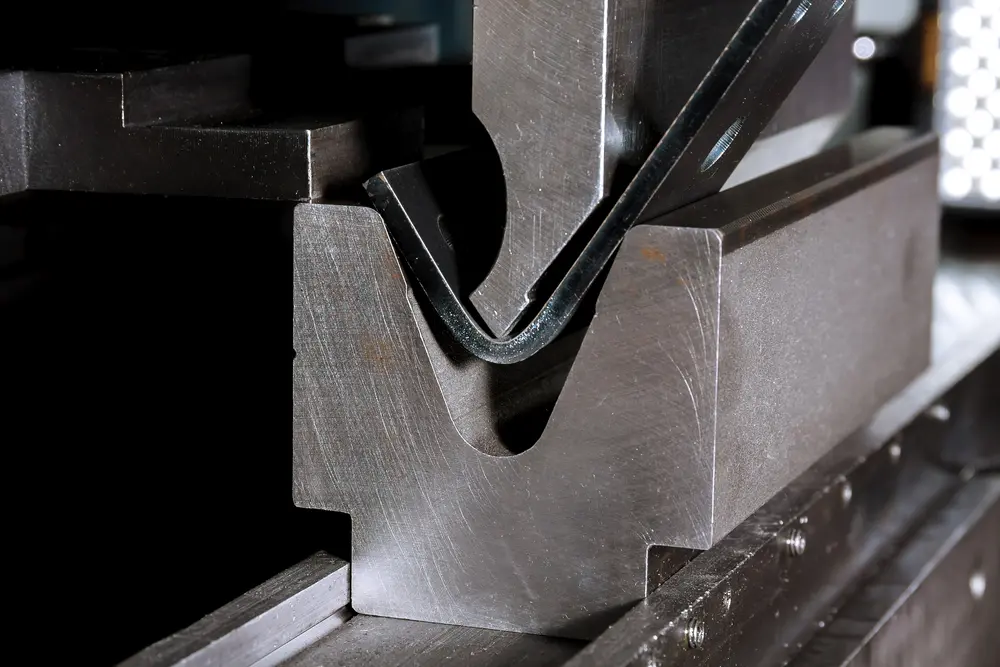As an ancient method of metal processing, press brakes are used today and have remained in use for more than 100 years. Is it true that press brakes were invented?
This 19th-century machine known as the cornice brake was built from cast iron parts attached to finished pieces of oak using a manually operated blade that forced a clamped piece of sheet metal to bend in a straight line – talk about some pressing labor.
What is press brake?
Press brakes use moulds (generally or specially formed moulds) to cut the cold rolled sheet into different geometric shapes.
The press brakes can quickly perform movements such as falling or walking, continuous traction, return stroke or stop halfway and bend multiple elbows at a feed.

Typically, press brakes employ CNC systems specifically designed for benders to reduce friction on the body.
What does a brake press do?
Press brake machines are made for bending sheet metal. Press brakes are usually narrow and long to help bend large sheets of steel with ease.

A press brake bends sheet metal when the punch is dropped into the metal sheet that was attached to the die.
Why is it called a press brake?
The 15th century definitions of press brakes were “tools for crushing”.
Eventually, the term “brake” grew into “machine.” Originally, the term came from the machine that shredded grains and fiber from crops. Press brake is, in its simplest form, an auxiliary tool.
Press Brake Professional Manufacturers
KRRASS is an established press brake manufacturer in China. We offer a range of hydraulic press brakes that can be used on both NC and CNC press brakes.
New custom bending tools and intuitive choices have been developed for customers’ requirements. Learn more about KRRASS machine-based press brakes for production optimization.
KRRASS Hydraulic Press Brake
KRRASS® specialises in hybrids that save up to 55% (and 77%) in energy compared to conventional bending machines. Unlike electric press brakes, hybrid press brakes reduce hydraulic oil use and power consumption, reduce bending energy consumption when bending sheet metal.
NC press brake models are mainly suitable for delicate and dependable flexing solutions. With intuitive controls, rigid structure, perfectly constructed designs, efficient tools and a high standard of safety and CE standards, it has become the world’s leader in this category.
What is the NC press brake?

Technical fields: NC Press brakes relates specifically to a torsion shaftsynchronization system for bending machines. The integrated torque shaft synergy system consists of a synchronous torque shaft, two swing arms connected to the synchronous torque shaft, and an electrical connector connected to the swing arms. One end of the swingarm has an axially connected connection with the synchronous torsion shaft, the other end of the swingarm is moved with the connecting rod.
If you want to bend a long and thick sheet, you can choose this type of press brake. If the length of the sheet is more than 14 meters, you can even tridem press brakes.
What is the CNC press brake?
The CNC press brakes do not have special features for return trips. In the fast forward phase of the downstream stroke, a single speed shunt is used on the basis of parallel synchronization to eliminate deteriorated quality and leakage. The two cylinder correction plunger is then installed on the workbed to provide further correction.
Different structural principles
Both designs are different and result in different structures that ensure the synchronization of both sides of sliding casters. A Torsion shaft connects the left swing rods and a Torsion shaft causing synchronization mechanisms for both sides. Therefore, torsion shaft synchronous bending machines are mechanical forcing synchronous methods and synchronous asynchronous sliders are unable to automatically adjust the parallel position if necessary. The CNC press brake installs magnetic scales between sliders and wall panels.
Operation

Because the nc press brake has no control systems or V-axes compensation, the operator must only take experience from older workers when bending tests as defined in the drawings. Unless we meet, we’ll try. The process produces waste, has limited selection, and is very profitable in recruiting workers.
CNC Press Braker is operated by professional numerical control, V-axes compensation, easy operation and low worker skills.
Accuracy
The angle of rotation of a sliding hydraulic cylinders determines a curved workpiece. NC press brakes are a mechanism that keeps the slider in sync. It is impossible to provide feedback for errors in real time; the computer itself cannot adjust manually. The torsion shaft of hydraulic press brakes also has a low load capacity causing the shaft to flex and deform.
What size press brake should I buy?
The main factors in choosing bending machine is tonnage and bending length. This specification will depend on how long you want the material to bend. Knowing your application in advance will help in your decision.
Bending length
The bending length on the hydraulic press brake is the maximum possible length of an elastic sheet that can be bent.

With very small press brakes 4 feet long, it will be impossible to bend six feet of sheet metal. The press brakes should be slightly longer than the length of the sheets bending to your desired angle.
Tonnage
The tonnage on the press brake determines the maximum torque required during bending. Higher tonnage allows cutting thicker and harder metal sheets, and lower tonnage is more appropriate with thicker metal sheets.
Tell me the importance of tonnage and length.
All press brakes are designed to carry the maximum load, which is measured in tons in the press center, this is press brake’s load limit. Using the wrong tonnage can damage the presses and die, and if not, ruin them.
The tonnage limits of cylinder presses can be estimated by simple mathematics. Consider the number of metric tons between side columns multiplied by 6. This number is divided into tons.
Learn more about our products, please visit and subscribe to our Youtube channel










